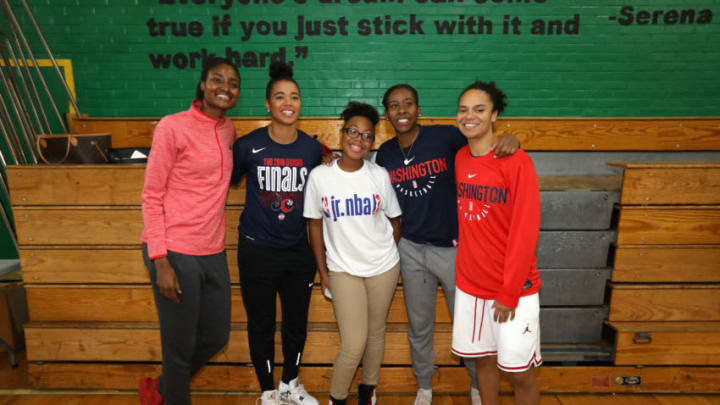A new focus on girls by the NBA should pay big dividends.
Monday, Oct. 8 was the start of the fourth annual Jr. NBA week – and it was kicked off in a big and powerful way through the national campaign, Her Time to Play.
Her Time to Play was launched to encourage and inspire girls, ages 7-14, to play basketball, but to also serve as a springboard into more coaching and leadership opportunities for women.
While women’s basketball continues to feed its already hungry fanbase through this campaign, its messaging also brings to life the ever-growing importance of pouring into the next generation. Girls and women are the future and the answer to growing women’s basketball. Her Time to Play hit the jackpot — and with entities like the NBA fully invested as well, there’s nowhere to go but up.
I realize I was fortunate to have grown up around sports and some of my fondest memories as a kid were going to Nebraska women’s basketball games with my dad. Hand over heart, my dream to one-day play college basketball started in the Bob Devaney Sports Center. This initiative is equipped to fuel thousands of, if not more, little girls’ dreams in a way that my dad did for me.
More from WNBA
- Bet $5 on Sparks vs. Sky, Win $150 Instantly with Limited-Time DraftKings Promo
- Cash in for Over $2,000 With WNBA Promo Bonuses from FanDuel & Caesars
- FanDuel WNBA Promo Code Gives You $2,500 Bonus for ANY Game Tonight!
- Unlock $200 GUARANTEED With Crazy DraftKings WNBA Promo
- Unlock Over $4,500 Bonus With 3 Best WNBA Sportsbook Promos!
The impact of watching athletes who look like you compete at the highest level, and starting at a young age, could very well be immeasurable. Had I not seen firsthand what women were capable of achieving and being, with basketball serving as the vehicle of opportunity, I tend to believe there weren’t going to be many people outside of my own family who told me.
Seeing is believing. Doing is believing.
This campaign is the voice so many young girls need. And beyond that, could be exactly what they are waiting to hear to spark their curiosity about the game of basketball – even if it’s just a little bit. In the Jr. NBA’s video unveiling the Her Time to Play campaign, it states that by the age of 14, girls drop out of sports. This is a telling statistic — and one that I feel accentuates the fight for equality in terms of more and fairer coverage of our sport.
Imagine if every little girl who had a natural affinity for basketball, or even if they didn’t, knew that they could play in the WNBA when they grew up? Imagine if they turned on the TV and it was a common occurrence to see women’s basketball from their couch? Frankly, we aren’t there yet.
I stand with this campaign on so many levels for all of these reasons just mentioned. But above all, I’m excited at the thought of all the young girls who will be directly impacted by it. Whether it’s a mom, dad, sibling, aunt, uncle, grandparent or friend who inspires us — I see no reason why this campaign can’t move us to do a little more, too.
